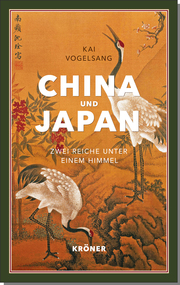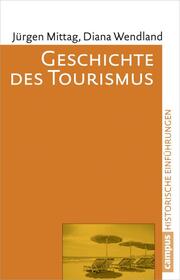Beschreibung
From a decidedly multidisciplinary perspective, the articles in Transnational Political Spaces address the notion that political space is no longer fully congruent with national borders. Instead there are areas called transnational political spacescaused by factors such as migration and social transformationwhere policy occurs oblivious to national pressure. Organized into three sectionstransnational actors, transnational spaces, and critical encountersthis volume explains how these spaces are formed and defined and how they can be traced and conceptualized.Aus interdisziplinärer Perspektive gehen die Beiträge der Frage nach, wie transnationale politische Räume hervorgebracht und gestaltet werden. Dabei sind diese nicht rein territorial definiert: Einbezogen werden Identitäten und Interaktionen, die nationale Grenzen überschreiten wie sie etwa durch Migration entstehen.
Autorenportrait
Mathias Albert ist Professor für Politikwissenschaft an der Universität Bielefeld. Gesa Bluhm, Andreas Leutzsch, Dr. phil., Jan Helmig, Dr. phil., und Jochen Walter, Dr. phil., promovieren bzw. promovierten dort in Politik- bzw. Geschichtswissenschaft.
Leseprobe
Introduction: The Communicative Construction of Transnational Political Spaces Mathias Albert, Gesa Bluhm, Jan Helmig, Andreas Leutzsch, Jochen WalterPolitical space does not inevitably correlate with nation-state borders and territories. In a world characterized by the permanent crossing and transformation of borders and boundaries, the political, stripped of large parts of its territorial connotations, is characterized by a heterogeneity and flexibility which is related to particular spatial conditions, junctions and disjunctions. However, the transnational character of the political is not a particular phenomenon of the "global age" (Beck 2006; Albrow 1996), but can be observed throughout the existence, and in a certain sense, already before the emergence of the nation-state.Defining political space as a sphere in which common representations and identifications are negotiated, this volume investigates the following questions: If political space is no longer perceived as always and automatically congruent with the territory of the nation-state, how are transnational spatial units of the political formed and defined? And how can they be traced and conceptualized?Despite its rather extensive usage, which makes it resemble a catch-all phrase, the term transnationalism traditionally refers to phenomena and processes which cross national boundaries but are not global in scope, while at least involving one non-state actor. This definition was already contained in the basic characterization of transnational relations in world politics first developed by Joseph Nye and Robert Keohane in the early 1970s, which emphasizes that "a transnational interaction may involve governments, but it may not only involve governments: We speak of transnational communication, transportation, finance, and travel when we refer to nongovernmental or only partially governmental interactions across state boundaries" (Nye/Keohane 1971: 332). In short, "at least one actor" involved in transnational cross-border interactions "is not an agent of a government or of an intergovernmental organization" (Nye/Keohane 1971: 332; also Risse-Kappen 1995b: 5). Transnational relations therefore do not leave aside the governmental level, but above all do not attribute a sphere of influence to state actors separate from or even superior to interactions among non-state actors. In a nutshell, transnational relations may encompass state actors, but they necessarily include non-state actors (Pries 2007: 16).The present volume is however not primarily about transnational relations in general, but more specifically about forms of political transnationalism. Following the definition by Hartmut Kaelble and others, transnationalization describes the development of social or institutional cross-border networks, whereas transnationalism comprises the "semantic construction" of common representations and identifications among larger groups of state and non-state actors beyond the nation-state (Kaelble et al. 2002: 10). The focus therefore at least partly shifts from the disintegration or de-territorialization of the nation-state by direct circulation, mobility or migration, to the level of communication, imagery and symbolic practices as well as to the role which the media play in processes of common identity-building.A constructivist and semantic definition of political transnationalism presupposes an extended notion of what can be or become political and of which actors can act politically - beyond governments and other institutions of the state. Recent research in the history of the political, political theory and political sociology emphasizes that the political constitutes a flexible and highly contested sphere engendered by communication and interactions among various state and non-state actors (Schorn-Schütte 2006; Stollberg-Rilinger 2005; Frevert 2005: 23-24; Nassehi/Schroer 2003; Mergel 2002; Beck 1993: 204-14). By including certain social groups and excluding others, actors permanently (re-) configure the nature of the political. It is thus not politics as a fixed entity bound to nation-states and their governments "above" - as opposed to other agents "below" - which is of interest here, but the variability of political processes and their delimitations. The idea of the political as the point of convergence where collective representations are conceived, disputed and transformed facilitates the analysis of various types of cross-border exchanges on a broader social basis. By looking at groups of actors that, according to the dynamic negotiation of power relations, join in or are excluded from the production of representations and their configurations, a more detailed impression of the political in transnational contexts becomes possible.
Inhalt
ContentsIntroduction: The Communicative Construction of Transnational Political SpacesMathias Albert, Gesa Bluhm, Jan Helmig, Andreas Leutzsch, Jochen WalterPart I: AgentsThe World Revolution of 20xxChristopher Chase-Dunn and Richard NiemeyerIntellectual Cooperation in Transnational Networks: The League of Nations and the Globalization of Intellectual Property RightsIsabella LöhrThe Internationalization of Community Conflicts and the Construction of Transnational SolidaritiesThe Northern Irish Case in a Comparative PerspectiveElise Féron and Brigitte Beauzamy"Living the Brand"Nationality, Globality and the Identity Strategies of Nation Branding ConsultantsMelissa AronczykPart II: StructuresNational Communications for a Transnational CommunityItaly's Promotion of italianità among Emigrants, 1870-1920Mark I. Choate145Political Communication at the World ExhibitionsTransnational Negotiation of Social and Education Policy, 1889-1904Wolfram Kaiser and Klaus Dittrich162Finance as Transnational Space and the Memory of the Gold StandardOliver Kessler185The Imagination of Europe in Twin Town Activities: Rethinking Political Culture in the European UnionAndreas Langenohl212Part III: EncountersUndermining Methodological NationalismHistoire croisée of Concepts as Transnational HistoryJani MarjanenConceptual Adaptation: Bridging Spatial and Temporal Relations through Cognitive WormholesHayo SiemsenNations as TimesThe national construction of political space in the planetary history of Eugen Rosenstock-HuessyKnut Martin StünkelNotes on ContributorsAcknowledgements
Schlagzeile
Historische Politikforschung
E-Book Informationen
„eBooks“ sind digitale Bücher. Um eBooks lesen zu können, wird entweder eine spezielle Software für Computer, Tablets und Smartphones oder ein eBook-Reader benötigt. Da es eBooks in unterschieldichen Formaten gibt, gilt es, folgendes zu beachten.
Von uns werden digitale Bücher in drei Formaten ausgeliefert. Die Formate sind EPUB mit DRM (Digital Rights Management), EPUB ohne DRM und PDF. Bei den Formaten PDF und EPUB ohne DRM müssen Sie lediglich prüfen, ob Ihr eBook-Reader kompatibel ist. Wenn ein Format mit DRM genutzt wird, besteht zusätzlich die Notwendigkeit, dass Sie einen kostenlosen Adobe® Digital Editions Account besitzen. Wenn Sie ein eBook, das Adobe® Digital Editions benötigt, herunterladen, erhalten Sie eine ASCM-Datei, die zu Digital Editions hinzugefügt und mit Ihrem Account verknüpft werden muss. Einige eBook-Reader (zum Beispiel PocketBook Touch) unterstützen auch das direkte Eingeben der Login-Daten des Adobe Accounts – somit können diese ASCM-Dateien direkt auf das betreffende Gerät kopiert werden.
Da eBooks nur für eine begrenzte Zeit – in der Regel 6 Monate – herunterladbar sind, sollten Sie stets eine Sicherheitskopie auf einem Dauerspeicher (Festplatte, USB-Stick oder CD) anlegen. Außerdem ist die Anzahl der Downloads auf maximal 5 begrenzt.









